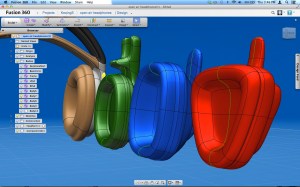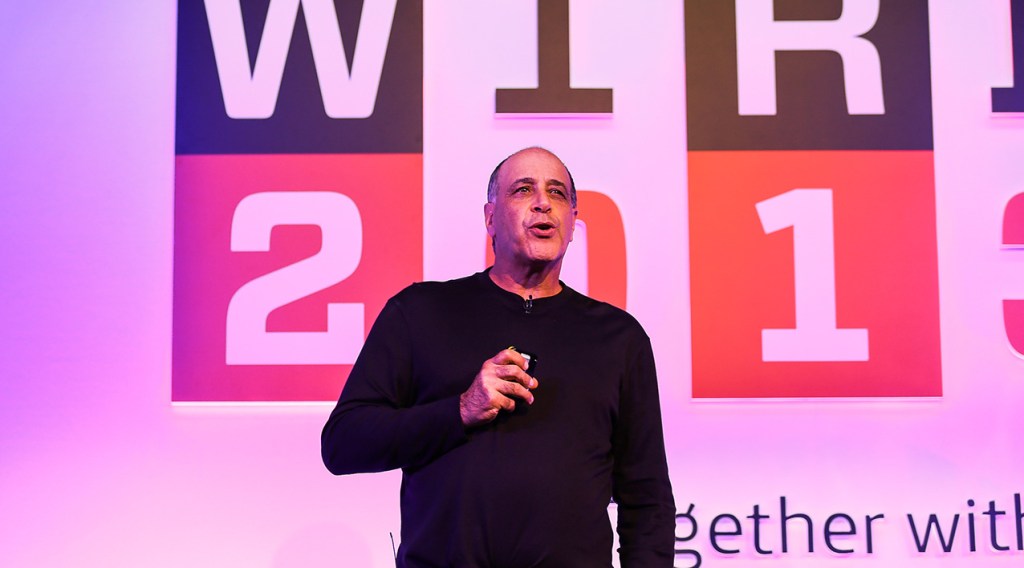Autodesk isn’t a startup, but in a lot of ways, the graphics software giant is behaving like one – and helping pave the way for a new generation of hardware entrepreneurs in the process. CEO Carl Bass was at Wired’s London 2013 event this week, and TechCrunch sat down with him to discuss the rise of the device startup, the future of 3D printing, and whether Autodesk’s successful experiments with cloud software and flexible pricing might also lead it to play a little further afield – in the world of own-brand hardware, for instance.
Bass sees a world where there are new kinds of companies, ones that aren’t only tackling previously impossible hardware projects, but ones that are tackling huge hardware problems. Of course, there are the hundreds that are building appcessories and iPhone cases, but Bass notes that there are also now startups with fewer than 10 people and previously unthinkably modest amounts of funding who are literally going for moonshots – Moon Express, one of the companies he mentioned, is a California startup aiming to build a robot that can perform missions to Earth’s natural satellite. And people take them seriously.
That’s a vastly changed environment from what we’d expect was possible even 10 years ago, and it’s only going to continue to change. Bass notes that affordable, high-quality 3D printing means the scale of production required to launch a product is much smaller than it once was; access to funding is more readily available via crowdfunding and VCs who are more willing than ever before to put money into hardware; and increasingly, there’s an attitude among entrepreneurs that yes, they can do this.
Funding is more plentiful and readily available than ever before.
“Funding is more plentiful and readily available than ever before,” Bass said. “You have traditional venture capital still available, traditional angel funding still available, you have the Internet crowdsourcing stuff, and you even have this interesting variety of it. Some of it is still product-driven, but also all of us have essentially been turned into patrons, by which I mean we support the things we believe should exist in the world, and we’re not looking for monetary return… there’s some altruistic part of it that’s totally different than the traditional funding model.”
Also newly available to entrepreneurs is access to information and people. It’s no longer difficult to find out if someone else has attempted or is already building what you hope to create, Bass explained, thanks to Google and other tools. Not to mention that finding contact info, and communicating with people who are subject matter experts in areas you’re interested in is remarkably easy. Finally, there are many more freely available tools, and tools that can scale near-infinitely in terms of computing power thanks to the power of the cloud.
“Now, I can put together a team of experts with minimal funding, and accomplish a huge amount,” Bass offered, summing up the changed circumstances.
Autodesk isn’t just observing this change and remaining idle; it’s innovating to keep up, and Bass points out that it’s doing so at a pace that helps it stay ahead of potential disruptors in its area, like Sunglass.io, which aims to build a cloud-based collaborative 3D modelling application in the browser that works regardless of what kind of machine you’re working on.
Recently, Autodesk introduced Fusion 360, which is an industrial and mechanical design platform accessible from PC, Mac or mobile device, which handles the heavy lifting through remote servers and which is available on a software-as-a-service subscription basis. It’s available via Autodesk 360, the company’s cloud-based suite, and starts off with a free account, which allows small teams and individuals with modest resources and requirements to take advantage, in addition to Autodesk’s legacy customers, which include huge design firms and product companies that pay huge subscription fees for access to versions of the same.
“We’ve actually gone out there and been really aggressive with the mobile apps, and with the cloud apps,” Bass said, addressing Autodesk’s steps to adapt to a changing environment. He also sees a future where 3D modelling and design is done in the cloud as a certainty in the future.

“I think it’s as certain as people using Google Docs, and file sharing and so on,” he said. “I think within a year or two, [cloud-based 3D design] will look like Google Docs does today, where you have an entire portion of the population that uses Google Docs and Dropbox, instead of Microsoft Office and FTP sites. It’ll be the same in that it’ll work its way into the population. Right now, I’m in love with our cloud-based apps, but I still understand where the desktop apps are useful; that’s just not my use-case. I tend to work on small projects where collaboration and access to my information everywhere is really important.”
Since Autodesk has been nimble when it comes to adapting to demand for cloud-based products and alternate pricing, I asked Bass if hardware might also be in the company’s future. He wouldn’t say definitely, but he did admit to being very open to the idea, given the right opportunity.
“There used to be an unwritten rule where a company was either a hardware company or a software company but you can’t do both,” Bass said. “Now Microsoft is doing both, Google is doing both, Oracle is doing both, and so you look around and think ‘This may have been one of those artificial distinctions.’ Of course, the other companies that do it best are Apple and Samsung. It could move in the next few years from being something that people avoided like the plague, to something that’s almost required.”
Where Autodesk sees an opportunity potentially in that market is in the industrial 3D printing space, if it can figure out a way to offer something there that no one else is yet providing, perhaps with more seamless integration with its software products. Bass is also keen to note that they’d never do anything that steps on the toes of their clients, which he says means they’d have to identify a clear and present gap to make a move.
Speaking more generally about 3D printing’s potential, Bass noted that there’s going to be a lot of activity that benefits startups and entrepreneurs in the industrial 3D printing market in the next few years, including examples like Cambrian Genomics, the California startup 3D printing DNA that stands as one of Bass’ favorite examples of the new breed of brash, ambitious startups. That’s where to look to try to find the next big thing, Bass suggested, as we face increasing consumer and observer ennui with the myriad social networking and app-based startups. The future is hardware, and not just that, but hardware that stretches the limits of what we believe is possible.






























Comment